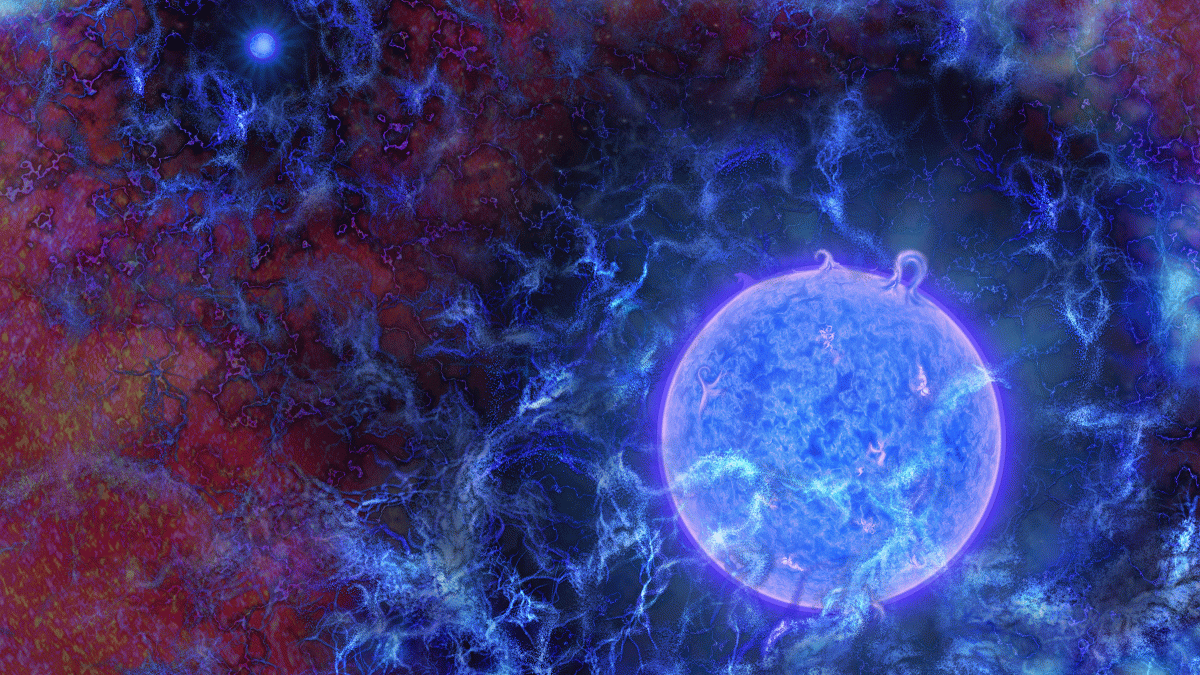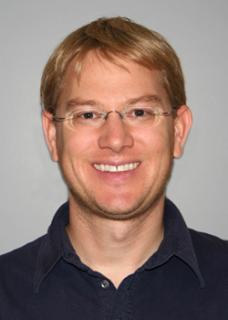A key discovery on the birth of stars and unexpected conditions in the early universe by Arizona State University cosmologist Judd Bowman and his research team has been chosen by the U.K.-based publication Physics World as one of its top 10 "Breakthroughs of the Year."
“It has been amazing to see the response to our paper over the last nine months and now to have the potential of this research acknowledged by Physics World," said Bowman, an associate professor in the School of Earth and Space Exploration. "This is an extremely challenging measurement and we are eager for another team to reproduce it so that we can fully explore its implications.”
Judd Bowman
Bowman is an experimental cosmologist interested in the formation of structure in the early universe, the great Cosmic Dawn that includes the very first stars, galaxies and black holes.
After 12 years of research, last February, Bowman’s research team — which included Raul Monsalve, Thomas Mozdzen and Nivedita Mahesh in ASU’s School of Earth and Space Exploration, and collaborator Alan Rogers of the Massachusetts Institute of Technology — used their specially constructed experiment at the Australian national science agency's (CSIRO) Murchison Radio-astronomy Observatory (MRO) in Western Australia to observe colder-than-expected hydrogen gas that existed just 180 million years after the Big Bang.
The discovery provided the first evidence for the oldest ancestors in our cosmic family tree. But a bigger surprise was the temperature of the gas around those early stars. One possible explanation is that the primordial gas was cooled through extremely weak interactions with dark matter.
There is five times more dark matter in the universe than normal matter, but it has never been directly seen; instead it is inferred to exist due its gravitational influence on other objects. If confirmed by additional investigations, the discovery by Bowman and his team will have provided the first clues in the decades-long search for the nature of dark matter.
Finding such signals is a painstaking process that took the research team more than a decade to develop technology to accurately separate signal from noise. By necessity, much of Bowman's data collection takes place in the desert outback of Western Australia and in other remote sites around the world where interference from human-generated radio sources like FM radio and TV stations is greatly reduced.
Through their Experiment to Detect the Global EoR Signature (EDGES) project, the team measured the average radio spectrum of all the astronomical signals received across most of the Southern Hemisphere sky.
“There was a great technical challenge to making this detection, as sources of noise can be a thousand times brighter than the signal — it’s like being in the middle of a hurricane and trying to hear the flap of a hummingbird’s wing,” said Peter Kurczynski, the National Science Foundation program officer who supported this study. "These researchers with a small radio antenna in the desert have seen farther than the most powerful space telescopes, opening a new window on the early universe.”
The signals detected by the radio spectrometer for the study came from primordial hydrogen gas that filled the young universe and existed between all the stars and galaxies. These signals hold a wealth of information on the conditions in the early universe that opens a new window on how early stars — and later, black holes and galaxies — formed and evolved.
“It is unlikely that we’ll be able to see any earlier into the history of stars in our lifetimes,” Bowman said. “This project shows that a promising new technique can work and has paved the way for decades of new astrophysical discoveries.”
And while further observations are needed to back up this hypothesis, noted Physics World, the research could help resolve one of the most important unsolved mysteries of physics: What is the nature of dark matter?
More Science and technology

Beyond the 'Dragon Arc': Unveiling a treasure trove of hidden stars
NASA's James Webb Space Telescope (JWST) has set a new milestone: capturing images of over 40 individual stars in a galaxy so distant that its light has traveled since the universe was only half its…

ASU selected as home and partner for CHIPS and Science Act-funded national facility for semiconductor advanced packaging
Following a week where a spirited effort by the Sun Devil football team captured the nation’s attention in the Peach Bowl, it is Arizona State University’s capability as a top-tier research…

ASU professor shares the science behind making successful New Year's resolutions
Making New Year’s resolutions is easy. Executing them? Not so much.But what if we're going about it all wrong? Does real change take more than just making resolutions?Michelle Shiota thinks so. …

